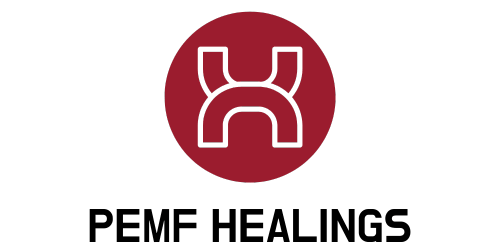Have you ever wondered about the benefits of Pulsed Electromagnetic Field Therapy (PEMF)? If so, you’re in for a treat! In this article, we’ll explore the fascinating world of PEMF and discover how it can potentially improve your overall well-being. So, sit back, relax, and prepare to be amazed by the wonders of this innovative therapy.
Definition
Brief explanation of pulsed electromagnetic field therapy
Pulsed electromagnetic field therapy, also known as PEMF therapy, is a non-invasive treatment approach that utilizes electromagnetic fields to stimulate the body’s natural healing processes. It involves the use of specialized devices that generate pulsating electromagnetic fields that can penetrate deep into the body’s tissues.
How It Works
Mechanism of action
PEMF therapy works by emitting electromagnetic fields that penetrate the body and interact with cells and tissues. These electromagnetic pulses stimulate electrical and chemical processes within the cells, promoting various physiological responses. The mechanism of action is believed to involve the stimulation of cellular metabolism, improved circulation, and enhanced tissue healing.
Effects on cells and tissues
The electromagnetic fields generated by PEMF therapy can influence the behavior of cells and tissues in several ways. They can enhance the production of adenosine triphosphate (ATP), the energy currency of cells, leading to increased cellular metabolism. This increased energy production can facilitate processes such as tissue repair and regeneration.
PEMF therapy has also been found to improve circulation by dilating blood vessels and enhancing blood flow. This increased blood flow can bring vital nutrients and oxygen to the tissues, promoting healing and reducing inflammation. Additionally, PEMF therapy has been shown to stimulate the production of nitric oxide, a molecule that plays a role in vasodilation and anti-inflammatory effects.

History
Origins of pulsed electromagnetic field therapy
The use of electromagnetic fields for therapeutic purposes dates back thousands of years. Ancient civilizations, such as the Egyptians and Greeks, were known to use magnetic stones for healing purposes. However, the modern application of PEMF therapy began in the late 19th century with the discovery of electromagnetic induction by Michael Faraday.
Development over the years
Throughout the years, research and technological advancements have contributed to the development of more sophisticated PEMF therapy devices. From the early static magnets to the current pulsating electromagnetic fields, the understanding of the therapeutic potential of electromagnetic fields has evolved. Today, PEMF therapy is gaining recognition as a viable complementary treatment option for various conditions.
Benefits
Pain management
One of the primary benefits of PEMF therapy is its potential for pain management. By targeting the underlying causes of pain, such as inflammation and tissue damage, PEMF therapy can help alleviate pain associated with conditions like arthritis, musculoskeletal injuries, sports injuries, and chronic pain conditions.
Improved circulation
PEMF therapy has been shown to improve blood circulation by enhancing vasodilation. This increased blood flow can benefit individuals with circulatory disorders and promote the delivery of essential nutrients and oxygen to the tissues, aiding in tissue repair and overall wellbeing.
Reduction of inflammation
Inflammation is a natural response by the body to injury or infection. However, chronic inflammation can lead to various health issues. PEMF therapy has been found to help reduce inflammation by modulating the release of inflammatory mediators and promoting tissue healing.
Enhanced tissue healing
By promoting cellular metabolism and increasing blood flow, PEMF therapy can enhance the healing of tissues. It can aid in the repair of damaged tissues, such as muscles, tendons, and ligaments, and accelerate the healing process for wounds and post-operative recovery.
Enhanced bone healing
PEMF therapy has demonstrated positive effects on bone healing and the treatment of fractures and non-unions. The electromagnetic fields can stimulate the cells involved in bone formation and regeneration, leading to improved bone healing outcomes.
Improved cellular metabolism
The increased energy production stimulated by PEMF therapy can have significant effects on cellular metabolism. This can enhance various cellular functions, including DNA synthesis, protein production, and waste elimination, ultimately promoting overall cellular health and function.
Relaxation and stress reduction
PEMF therapy has been reported to promote relaxation and reduce stress. The electromagnetic fields can help rebalance the body’s stress response system, leading to a greater sense of calmness and wellbeing.

Conditions Treated
Arthritis
PEMF therapy can provide relief for individuals with arthritis by reducing pain and inflammation associated with the condition. The therapy targets the underlying causes of arthritis, such as inflammation and tissue damage, and promotes tissue healing and regeneration.
Musculoskeletal injuries
Musculoskeletal injuries, including sprains, strains, and tears, can benefit from PEMF therapy. The therapy can help alleviate pain, reduce inflammation and swelling, and accelerate the healing process of the injured tissues.
Sports injuries
Athletes commonly experience injuries, such as ligament sprains, muscle strains, and stress fractures. PEMF therapy can complement traditional treatments by promoting healing, reducing pain and inflammation, and facilitating a quicker recovery.
Chronic pain conditions
Conditions characterized by chronic pain, such as fibromyalgia and neuropathic pain, can be challenging to manage. PEMF therapy offers a non-invasive treatment option that can help alleviate pain, improve circulation, and promote healing in individuals with chronic pain conditions.
Fractures and non-unions
PEMF therapy has been shown to enhance bone healing and aid in the treatment of fractures and non-unions. The therapy can stimulate the cells involved in bone formation, leading to improved bone healing outcomes and potentially reducing the need for invasive interventions.
Neurological disorders
While research is ongoing, some studies suggest that PEMF therapy may have potential benefits for individuals with neurological disorders. The therapy’s ability to modulate cellular activity and stimulate healing processes may have positive effects for conditions such as Parkinson’s disease, multiple sclerosis, and stroke recovery.
Depression and anxiety
PEMF therapy has been explored as a complementary treatment for mental health conditions like depression and anxiety. The therapy’s relaxing effects and promotion of overall wellbeing can contribute to stress reduction and improve mood.
Wound healing
PEMF therapy can play a significant role in wound healing by enhancing cellular metabolism, promoting circulation, and reducing inflammation. It can aid in the healing of chronic wounds, surgical incisions, and ulcers, improving outcomes and reducing the risk of complications.
Post-operative recovery
After surgeries, PEMF therapy can assist in the recovery process by reducing pain, edema, and inflammation. The therapy can support tissue healing, increase blood flow, and help patients regain mobility faster.
Safety and Side Effects
Non-invasiveness
One of the significant advantages of PEMF therapy is its non-invasive nature. The treatment involves the application of electromagnetic fields externally to the body, requiring no surgical procedures or invasive interventions.
Absence of known serious side effects
PEMF therapy is generally considered safe and well-tolerated. There are no known serious side effects associated with the therapy when used as directed. This makes it a viable option for individuals seeking complementary treatments without the potential risks of medications or surgery.
Possible mild side effects
Some individuals may experience mild side effects after PEMF therapy sessions. These side effects can include temporary discomfort, slight tingling sensations, or mild fatigue. However, these effects are typically transient and resolve quickly.
Safety considerations
While PEMF therapy is generally safe, certain precautions should be taken into account. Individuals with implanted medical devices, such as pacemakers or infusion pumps, should consult with their healthcare provider before undergoing PEMF therapy. Pregnant women should also seek medical advice before starting any new treatments.
Treatment Process
Devices and equipment
PEMF therapy utilizes specialized devices that generate pulsating electromagnetic fields. These devices can vary in size and specifications, ranging from small handheld units to larger therapy mats or chairs. The selection of devices depends on the specific treatment needs and the area of the body being targeted.
Duration and frequency of sessions
The duration and frequency of PEMF therapy sessions can vary depending on the individual’s condition and treatment goals. Sessions typically range from 10 to 30 minutes and may be repeated several times per week initially, with the frequency gradually decreasing as symptoms improve.
Treatment settings and adjustments
Qualified healthcare professionals or trained practitioners typically administer PEMF therapy. They will determine the appropriate treatment settings, such as the intensity and frequency of the electromagnetic pulses, based on the individual’s specific needs. Adjustments may be made throughout the course of the treatment to optimize outcomes.
Scientific Evidence
Studies and research supporting the effectiveness and safety
Numerous studies have explored the efficacy and safety of PEMF therapy across various conditions. Research has shown positive outcomes in pain management, improved wound healing, enhanced bone healing, and reduction of inflammation. While more high-quality research is still needed, the existing evidence supports the therapeutic potential of PEMF therapy.
Critiques and limitations of the research
Like any therapeutic approach, PEMF therapy has its limitations. Some critiques of the research include the need for more randomized controlled trials, larger sample sizes, and standardized treatment protocols. Additionally, variations in device specifications and treatment parameters make it challenging to compare studies and draw definitive conclusions.
Professional Use
Medical and healthcare settings
PEMF therapy is gaining recognition and acceptance in medical and healthcare settings. Qualified healthcare professionals, such as physicians, physiotherapists, and chiropractors, may incorporate PEMF therapy into their treatment plans to complement conventional therapies. The therapy is often used alongside other modalities to enhance patient outcomes.
Veterinary applications
Animals, too, can benefit from the therapeutic effects of PEMF therapy. Veterinary professionals may utilize PEMF therapy to manage pain, promote healing, and improve overall wellness in animals. The therapy is commonly used in the treatment of musculoskeletal injuries, arthritis, and post-operative recovery in pets and livestock.
Wellness centers and spas
PEMF therapy has found its place in wellness centers and spas as a non-invasive and relaxing treatment option. These establishments may offer PEMF therapy as part of their overall wellness programs to promote relaxation, stress reduction, and overall wellbeing.
Availability and Accessibility
Availability of devices
PEMF therapy devices are becoming increasingly available in the market. They can be purchased from reputable manufacturers and distributors and are available in various price ranges and specifications. The availability of devices allows individuals to explore PEMF therapy options in the comfort of their own homes.
Cost considerations
The cost of PEMF therapy can vary depending on factors such as the type of device, treatment duration, and the number of sessions required. It is essential to consider these factors and discuss insurance coverage or financing options with healthcare providers or the device manufacturers to determine the overall cost.
Training requirements
To ensure safe and effective administration of PEMF therapy, proper training is necessary. Qualified healthcare professionals and practitioners may undergo training programs to gain the necessary knowledge and skills for delivering PEMF therapy. This training provides an understanding of treatment protocols, device operation, and safety considerations.
In conclusion, pulsed electromagnetic field therapy offers a non-invasive and potentially effective treatment option for various conditions. With its ability to alleviate pain, improve circulation, reduce inflammation, and promote tissue healing, PEMF therapy is gaining recognition in medical, veterinary, and wellness settings. While research continues to explore its full potential, the existing scientific evidence supports its efficacy and safety. The availability of devices and the growing accessibility of PEMF therapy make it a viable option for individuals seeking complementary treatment approaches. With proper training and consideration of individual needs, PEMF therapy can contribute to improved well-being and enhanced healing processes.


